Lacewings are a diverse and interesting group that are an important part of the insect fauna in the Moggill Creek catchment area.
They are equipped with highly effective “fangs” and are vicious predators of a wide range of insects including many pests.
The eggs are unusual in that the are usually laid in rows under leaves hanging from slender stalks.
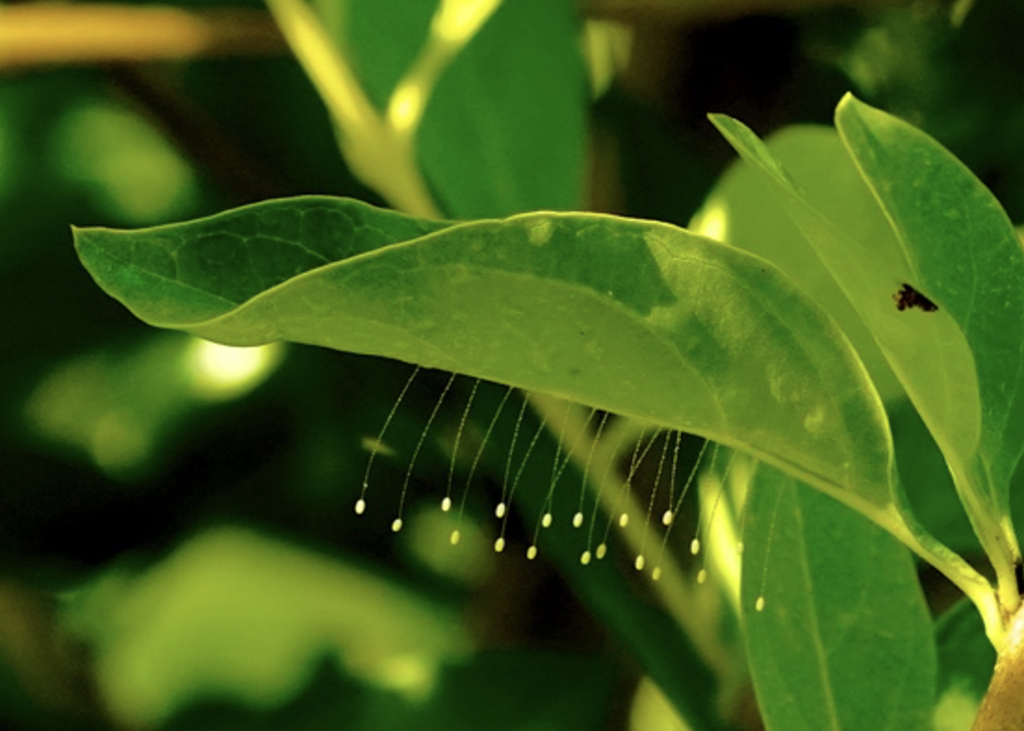 Lacewing Eggs Photo:Ed Frazer
Lacewing Eggs Photo:Ed Frazer
The hatched larvae vary enormously. One group, the Ant Lions live in dry areas, such as under the eaves of a house, where they build an inverted cone in the soil with steep sides. Ants that fall into the cone struggle to get out and are captured and eaten by the Ant Lion, which lies concealed at the bottom of the cone.
Another group of species attach objects to their backs and move around on the ground or on the stems of plants, well camouflaged as they track down aphids and larvae of other insects.
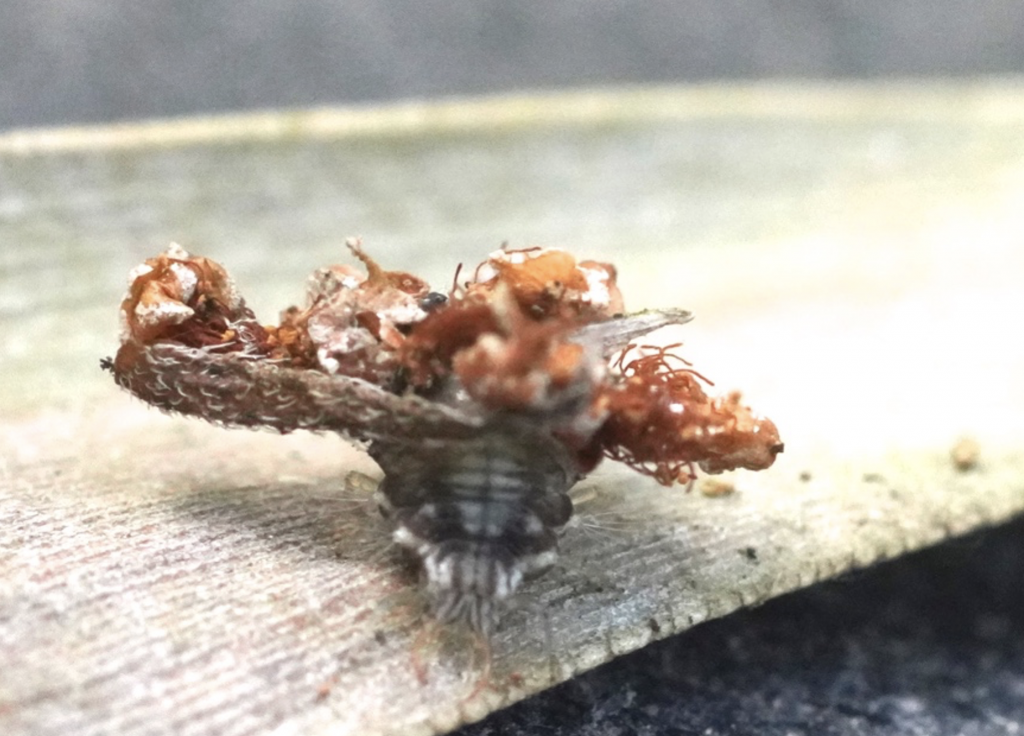 Lacewing lava with camouflage Photo: Ed Frazer
Lacewing lava with camouflage Photo: Ed Frazer
A primitive group of Lacewings that is now only found in Australasia is the Split-footed Lacewings. These relatively large sized lacewings are known outside this area only by fossil records. While some of their larvae adorn their backs with camouflage litter others live openly on the undersides of leaves, usually in the vicinity of creeks feeding on anything they can trap with their fearsome jaws. The larva look so different from their beautiful green winged adults it is hard to believe they can make such a transformation when they pupate and metamorphize into their winged stage.
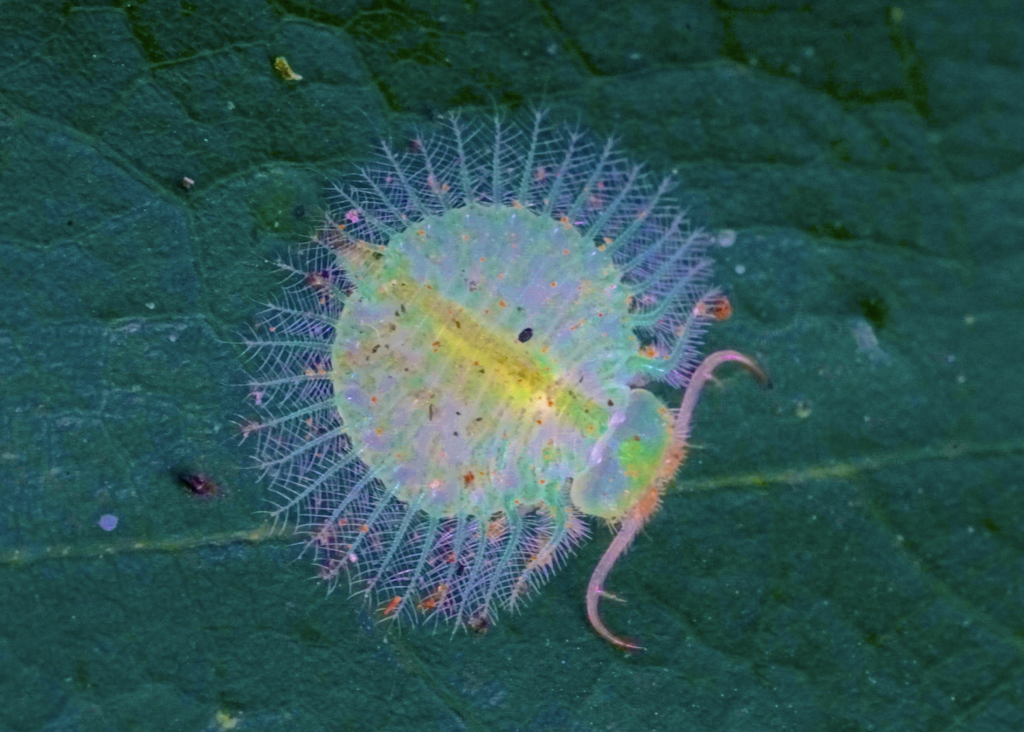 Larva of a Green Spotted Lacewing – one of the Split-footed Lacewings Photo:Ed Frazer
Larva of a Green Spotted Lacewing – one of the Split-footed Lacewings Photo:Ed Frazer
Adult Lacewings range in size from about 1cm to 5cm. All have in common translucent heavily veined wings. Most are highly predacious in both the larval and adult stages and have very efficient jaws. Little is published on the life history of this interesting group, which is well represented in this area.

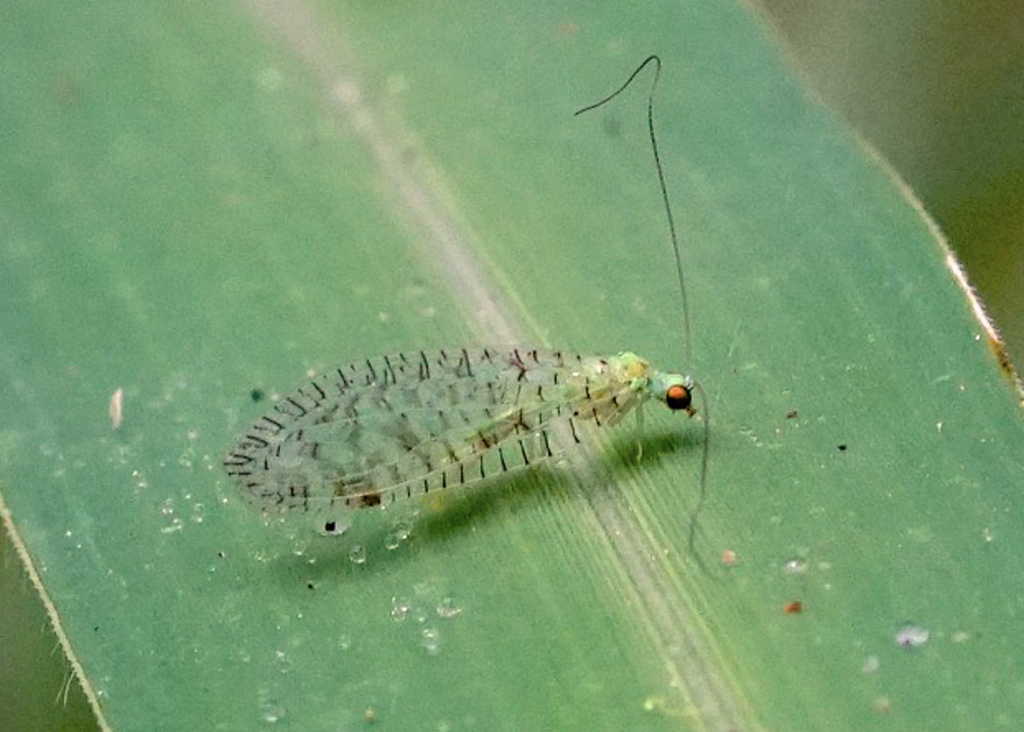 Small lacewing about 1cm feeding on minute insects on a leaf of grass Photo: Ed Frazer
Small lacewing about 1cm feeding on minute insects on a leaf of grass Photo: Ed Frazer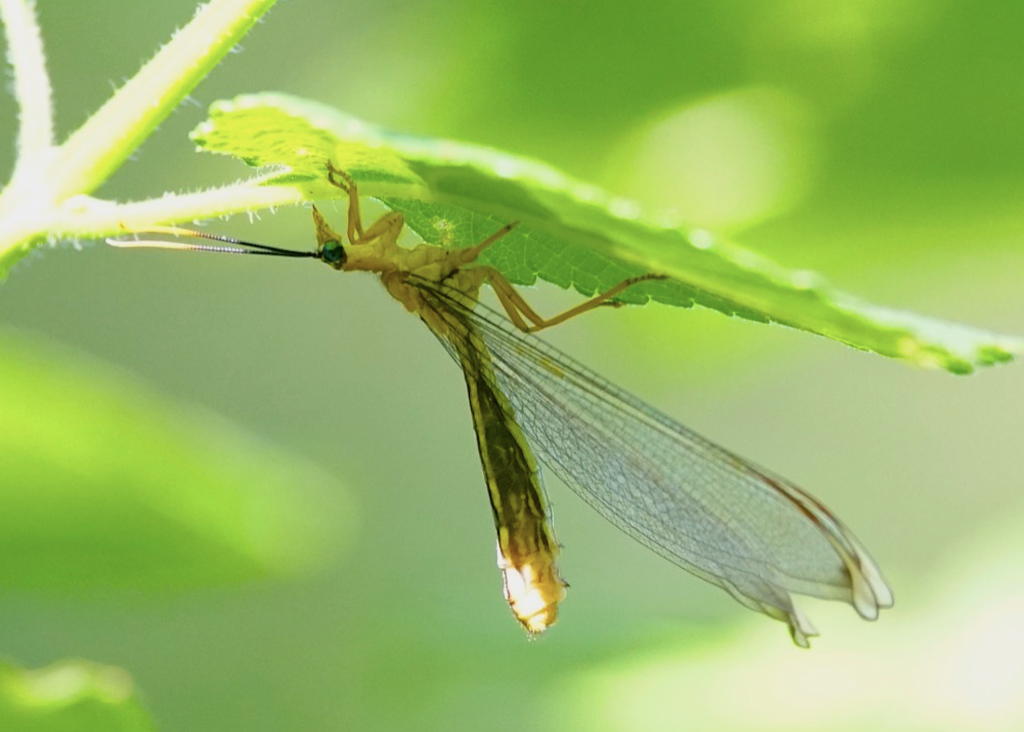 Split-footed lacewing the size and appearance of a dragonfly Photo: Ed Frazer
Split-footed lacewing the size and appearance of a dragonfly Photo: Ed Frazer